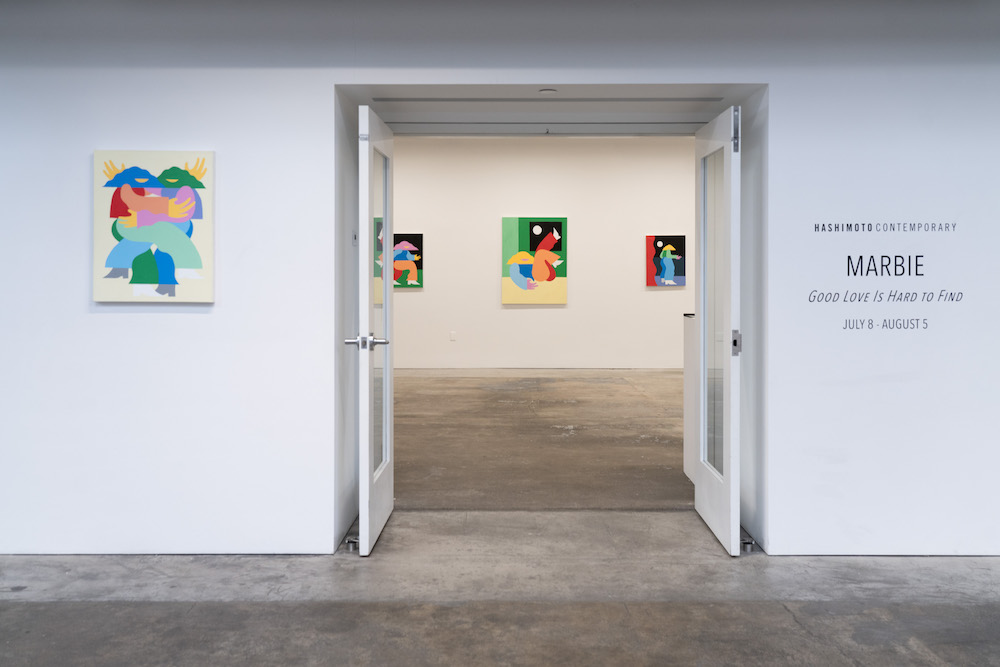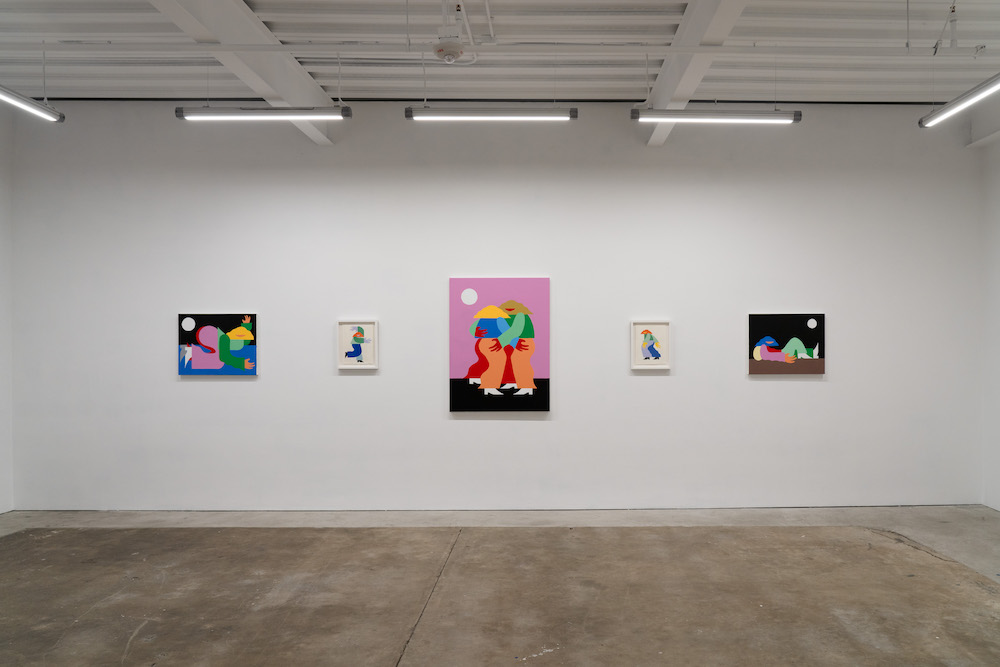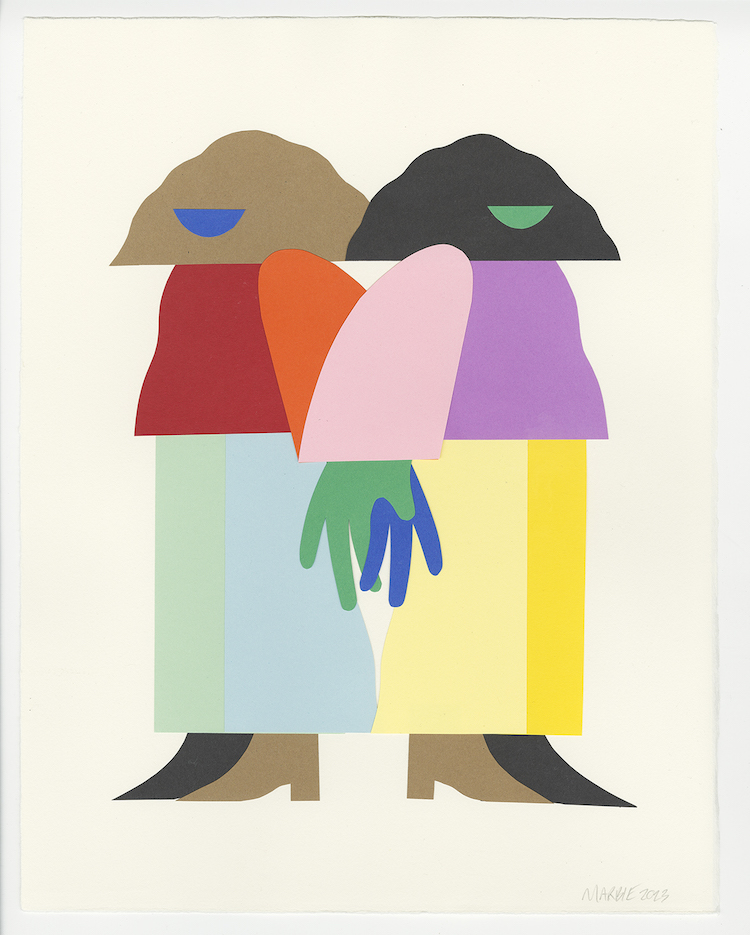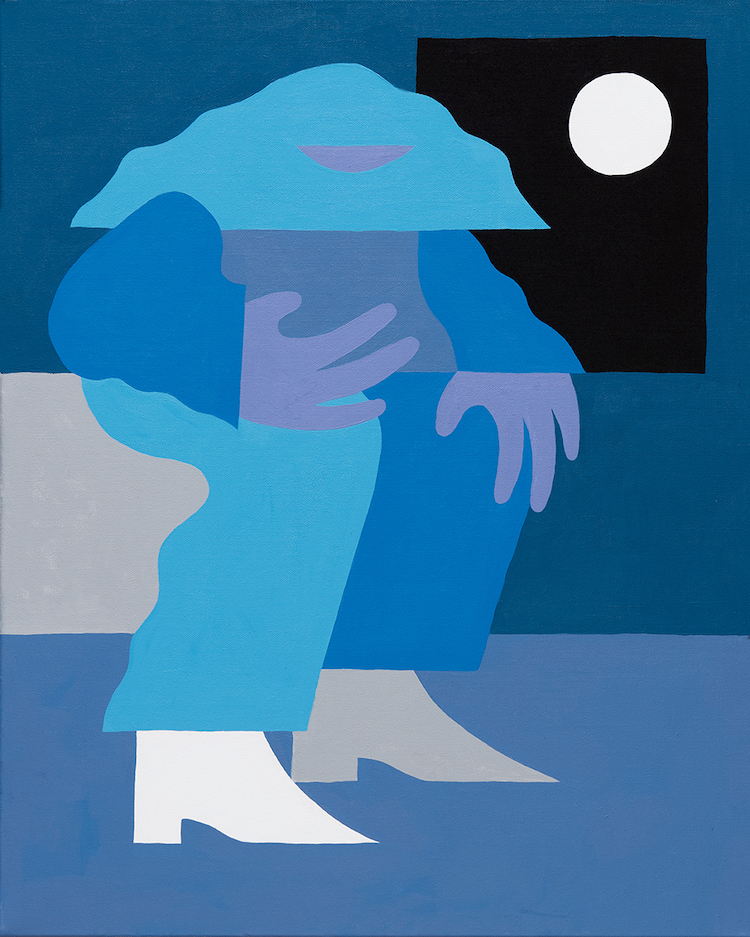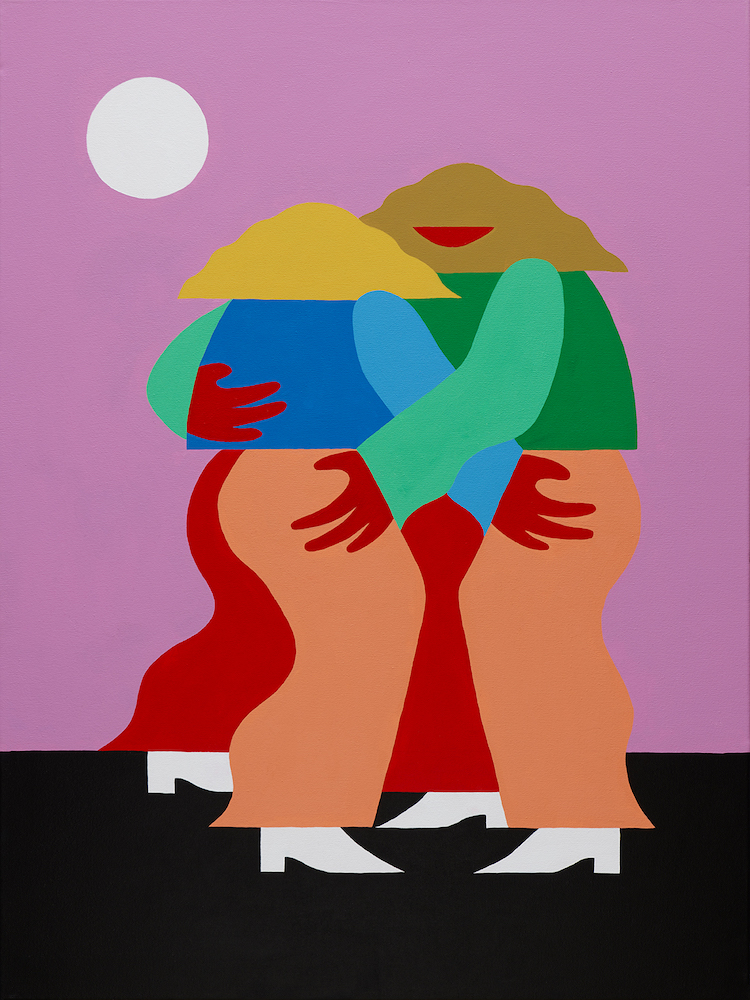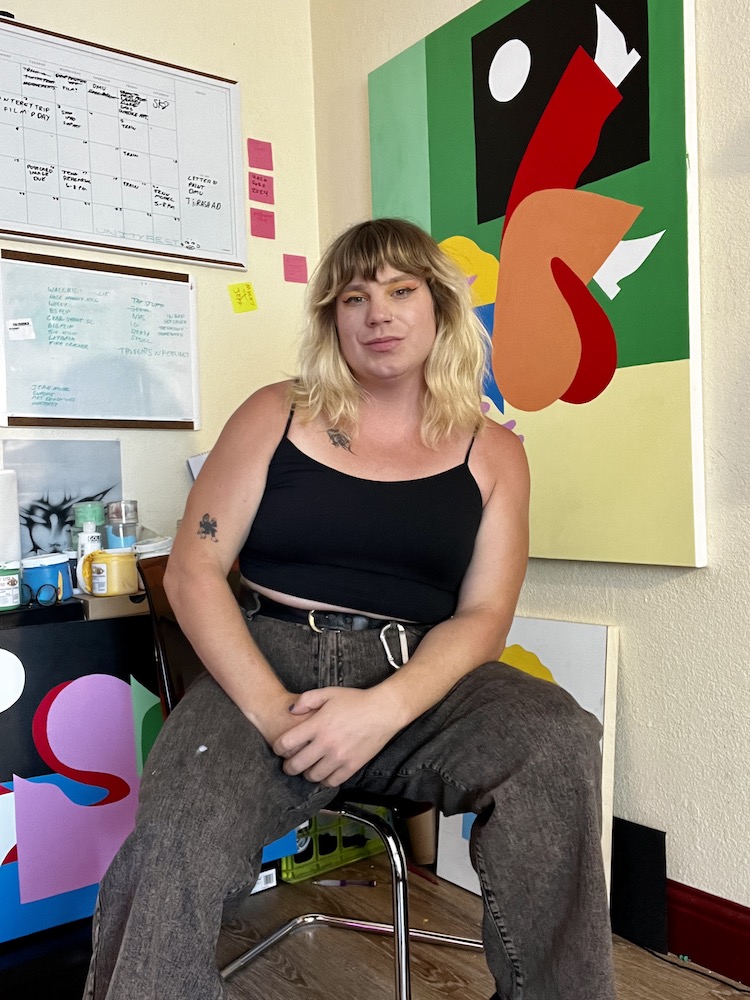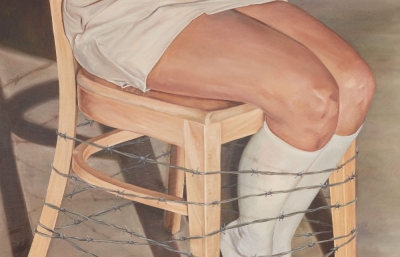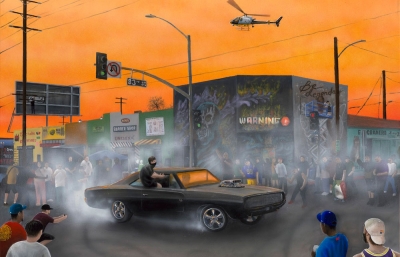Lately, Oakland-based artist Marbie has been thinking about love. More specifically, she’s been thinking about the emotional pits and peaks of being vulnerable with someone new. Drawing inspiration from these IRL romances, Marbie’s visual work “bridges the gap between a life in the public eye and one behind closed doors, depicting intimate scenes of solitude or unity.” On the occasion of her second solo presentation with Hashimoto Contemporary San Francisco, Marbie discusses the origins of her artistic practice and style, and new horizons in her life.
Katherine Hamilton: I want the Marbie artistic origin story: Where did your first impulse to make artwork come from, and has this impulse changed over the years?
Marbie Miller: I’ve always been artistic. As a kid, I loved drawing—making up new The Lord of the Rings characters or drawing skaters doing crazy tricks—but skateboarding consumed my brain from ages 11-21. When I was 21, I suffered a severe injury where I broke my leg in multiple places, requiring permanent hardware in my leg. I couldn’t walk for almost a year and doubted I would ever skate again—actually, I didn’t for over four years. I needed something to fill this giant hole in my life, and I was pretty limited in what I could do physically, so I started painting.
My best friend at the time was going to art school. We would paint together, and kind of fell in love with making art together. At this time, I was making art from the impulse of desperately needing to do something and figuring out who I am. The work was always figurative, even though I wasn’t knowingly pulling from any life experiences. I loved painting characters.
Your visual work exists in so many different ways: skateboard decks, hoodies, shirts, prints, collages, and, more recently, paintings. Is your approach to illustrating a deck similar or different from your collage or painting work?
Designing skateboard graphics is tough. You’re working with an awkward skinny rectangle, and I always struggle with the composition. Clothing is a lot easier to work with because it’s malleable. Designing art for products can be daunting because you always have to ask yourself, “Will this sell?” If I feel too in my head about something, I always send it to my friend Jeff (Cheung) to see what he thinks. I usually start by collaging and making rough mock-ups on my phone. If I already have a collage or painting I really like, I’ll try to see if it looks good on something else and go from there.
There’s an element of speculation or magical realism in your work: the figures certainly seem human, but maybe they aren’t located on the same planet or plane we are. Your work is also profoundly personal, influenced by your relationship with the world. How do you see the elements of fiction interacting with your real life in the works?
My characters are basically avatars for me and other people. It’s clear in my head which memories I’m depicting in my paintings. I try to give clues with the titles, but I can only assume that others just see this new world since I’ve kind of built out my subconscious. These characters represent me and my loved ones, not aliens or anything!
When I think about someone or how I’m feeling, I don’t see much else. I want things to look perfect, like how a memory appears after romanticizing it over and over in your head. I only want to show what’s important, depicting emotions with body language and color. Sometimes I use symbols like the moon to represent the presence of someone on my mind or someone looking over me. I like to sit outside, think a lot, and eventually paint what I’ve been feeling or thinking lately. It sounds corny, but it’s pretty therapeutic.
I want to talk about this distinct style you’ve cultivated in your visual work. When you first started showing your collages, the work seemed a bit looser than the tight, controlled lines you work with now. How did this style evolve?
My style came about when I started working at a copy and print shop in my early 20s. I had so much downtime and access to paper that I just started experimenting, cutting up shapes, and gluing them together. I loved how I could still be figurative without being so literal—in collage, there’s no black outline, and the final products almost never look like a portrait. It’s funny, at first, all my characters in my collages were circles with arms and legs. Over the years, I made rules or a system for how the figures work, and they started morphing into where they are now. These days, I know how I like to make hands and hair, and clothing. It’s nice having rules for this world because it feels special when I break them and still like the result. I love right angles and making lines meet up with other lines so each block of color fits and makes sense; it just feels balanced, I guess.
Even as your work has morphed and evolved, you’ve retained this collage aesthetic in your paintings and other illustrative work. What makes collage special to you?
Most of my paintings still start as a collage. When I collage, I can edit easily—cut a new shape or swap a color, move pieces around, and not glue anything down until it feels right. Also, I love how the layers of paper leave shadows and make things look a little more alive. For paintings, I have to really love the imagery before I begin. Painting feels more serious, and collage more playful.
You’ve also done risograph prints, which lend well to the graphic nature of your work. Are there other mediums you’re looking to experiment with down the line?
I would love to experiment with mosaics. My grandmother used to make ceramic mosaics on coffee tables and stepping stones, and I always remembered how cool they felt to touch and how permanent they seemed. This idea might not stick, but it sounds so fun to try translating my style to tile and concrete. Either that or animation, but I have a short attention span and probably not enough patience—lol.
If you had all the resources in the world, what is a dream project you would realize?
It’s hard to imagine having a ton of money to pour into a project when I don’t even have health insurance... But for the sake of the fun question, I would love to paint large murals and have all my friends help me with no time constraints. Or, to think even more outlandish, I would design and build a house, curating every little detail of it, from the walls to the dishes.
The exhibition you had in 2022 at Hashimoto Contemporary, Loved Ones, was mainly about dealing with isolation and finding moments of hope and perseverance despite one’s immediate circumstances. The tone of this upcoming exhibition is brighter—open to the world, ready to embrace. What inspired this change for you?
When I was working on my last show, I had been single for three years, was going through the first few years of the pandemic, and moved from Wisconsin to California. I felt really, really lonely, and that’s especially hard for someone who is such a sucker for romance like I am. Since then, I found a good home, friends I would call family, and started dating again. My new work focuses on romantic love—from falling for someone and fantasizing about them to feeling scared and heartbroken. I’m basically trying to capture all the emotions of dating again, like the dance of trying to impress someone or feeling insecure. Love is fun and scary. It’s tough being vulnerable, but worth it.
What is “good love”?
Good love is that person you think about when you hear love songs.
Marbie’s solo exhibition Good Love is Hard to Find is on view at Hashimoto Contemporary San Francisco through August 5th.

